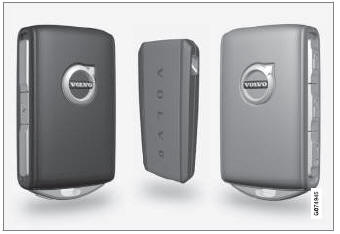Volvo XC90: Starting and driving / Braking assist after a collision
In a collision in which the activation level is reached for the pyrotechnic seat belt tensioners or airbags, or if a collision with a large animal is detected, the vehicle's brakes will be automatically activated. This function is intended to help prevent or reduce the effects of any subsequent collision.
After a serious collision, it may no longer be possible to control and steer the vehicle. In order to avoid or mitigate a possible further collision with a vehicle or an object in the vehicle's path, the brake assist system is activated automatically to help stop the vehicle safely.
If braking is not appropriate, e.g. if there is a risk of being hit by passing traffic, the driver can override the system by depressing the accelerator pedal.
This function assumes that the brake system is intact after a collision.
 Hill Start Assist
Hill Start Assist
The function for assisting when starting the vehicle on inclines (HSA1)
helps prevent the vehicle from rolling backward when starting on an uphill gradient...
 Regenerative braking
Regenerative braking
The vehicle recovers kinetic energy during braking in order to reduce fuel
consumption and emissions.
The battery symbol is shown in
the instrument panel when the vehicle is generating power for the battery1...
Other information:
Volvo XC90 2015-2026 Owners Manual: Road Sign Information limitations
(Option/accessory) Road Sign Information (RSI1) functionality may be reduced in certain situations. The function could have reduced functionality due to e.g.: faded road signs signs located in a curve in the road twisted or damaged signs signs positioned high above the road fully/partially obstructed or poorly positioned signs signs partially or fully covered by frost, snow and/or dirt di..
Volvo XC90 2015-2026 Owners Manual: Operating the panoramic roof
(Option/accessory) The panoramic roof and sun curtain are operated using a control in the ceiling panel, and both are equipped with pinch protection. WARNING Children, other passengers or objects can be trapped by the moving parts. Always operate the windows with caution. Do not allow children to play with the operating controls. Never leave a child alone in the vehicle. Remember to always c..

